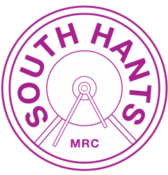SHMRC Annual Exhibition: Layouts 2023
The following layouts have been booked to appear at our next exhibition
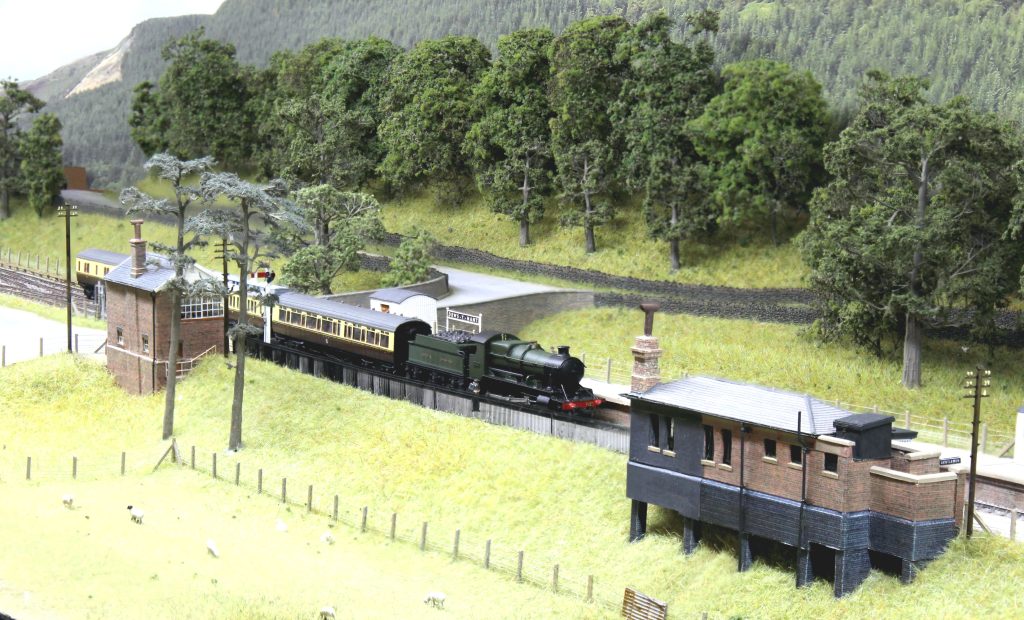
Drsw y Nant (2mm scale 9.42mm gauge) - Nigel Ashton
Drws y Nant is a passing station on the GWR Ruabon to Barmouth route, situated between Bala and Dolgellau in a wooded valley in Mid-Wales. As the only building left now is the station master’s house, the layout was built using many archive photographs as well as site visits to get the general lie of the land.
The track is built to 2FS standards. The offset scissor crossing next to the level crossing was a unique bit of trackwork that gives the station a bit more interest than a simple passing loop. Stock is a mix of scratch-built, kit built and modified RTR .
A Magnorail system animates the road vehicles and servos control most of the movements for points, signals and level crossing, all operated via a Digitrax DCC system.
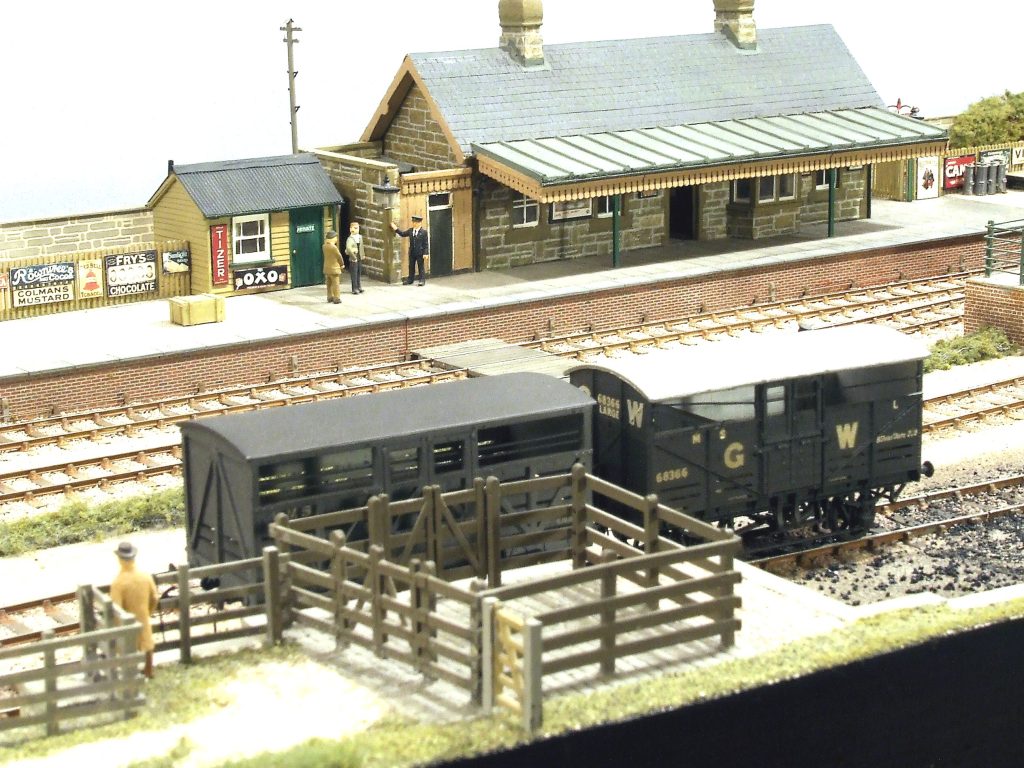
Flintcome (4mm scale EM Gauge - East Dorset Gang of Four)
The layout represents the end of a fictional spur running to the south west from the Somerset & Dorset Joint Railway (S&DJR) at Sturminster Newton. Thomas Hardy’s novel ‘Tess of the D’Urbevilles’ provided the name and location, but the layout portrays the picture as it might have been in the late 1930s when the S&DJR was being run jointly by the London, Midland and Scottish and the Southern Railway. The scenic aspects attempt to represent the chalk terrain of the supposed location and tye main railway buidings have been base on a variety of S&DJR examples.
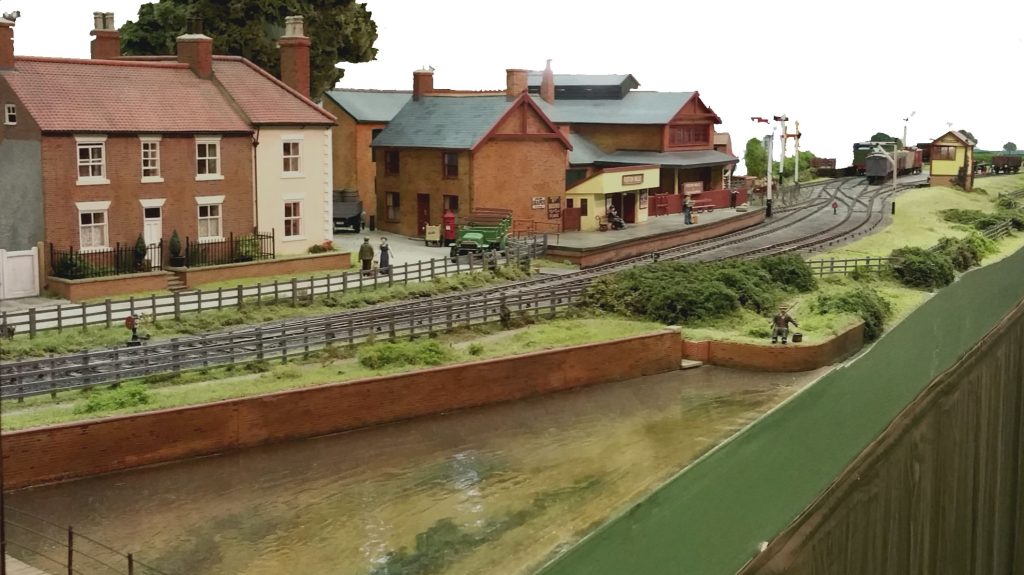
Foston Mills (7mm Scale 0 Gauge) Stubcroft Farm Studios Railway Circle
The North Holderness Light Railway running from Beverley to North Frodingham in East Yorkshire was a “very nearly built” railway. Contemporary tile maps, such as that at York, show the projected route. The layout shows a possible branch from North Frodingham to to Foston-on-the-Wolds, where there was a brewery and a large water turbine driven flour mill. The location and buildings, or their remains, still exist although unfortunately never served by rail.
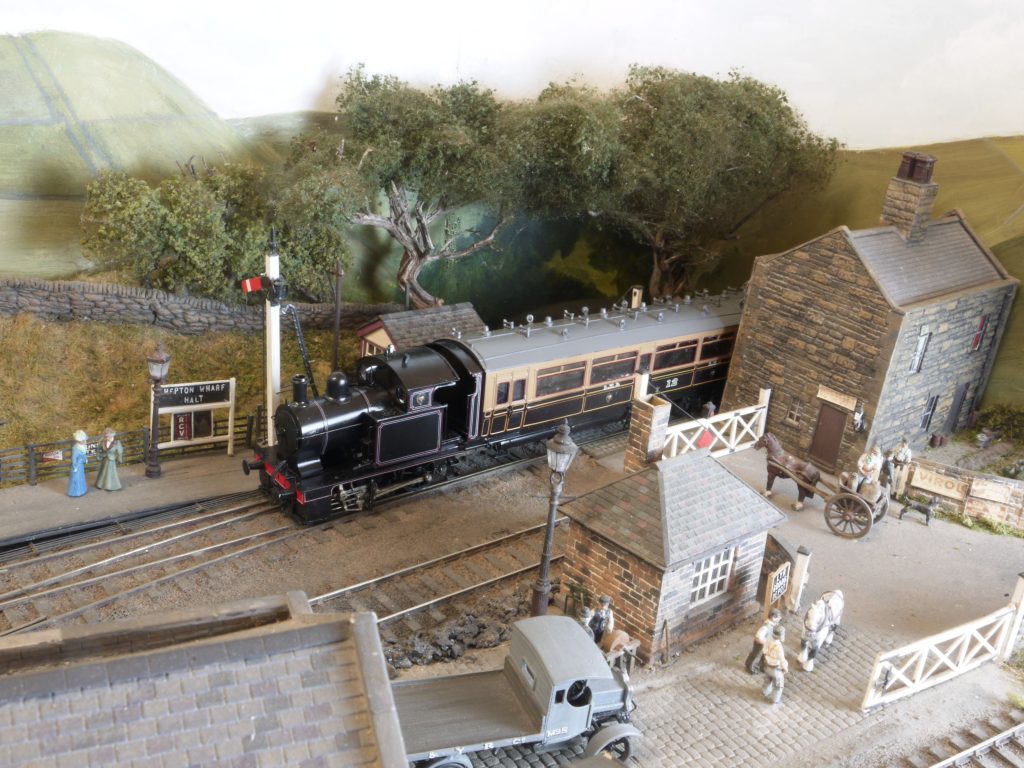
Hepton Wharf (4mm Scale P4).South Hants MRC
South Hants MRC are honoured to have in its care, two classic layouts associated with the late Iain Rice and the late Don Leeper. Hepton Wharf was one of the very first ‘cameo’ layouts and is well known (perhaps notorious!) for having been built in a weekend at Scaleforum in 1993. The layout was subsequently modified to include a passenger platform, signalling and a second fiddle yard.
We intend to maintain this layout in working condition, more or less as built, as a tribute to Iain and Don and to show the ‘state of the art’ in 1993.
The second layout is Longwood Edge which is not quite completed and which we hope to complete and show at our exhibition next year.
Both layouts are covered extensively in Iain’s book ‘Creating Cameo Layouts’.
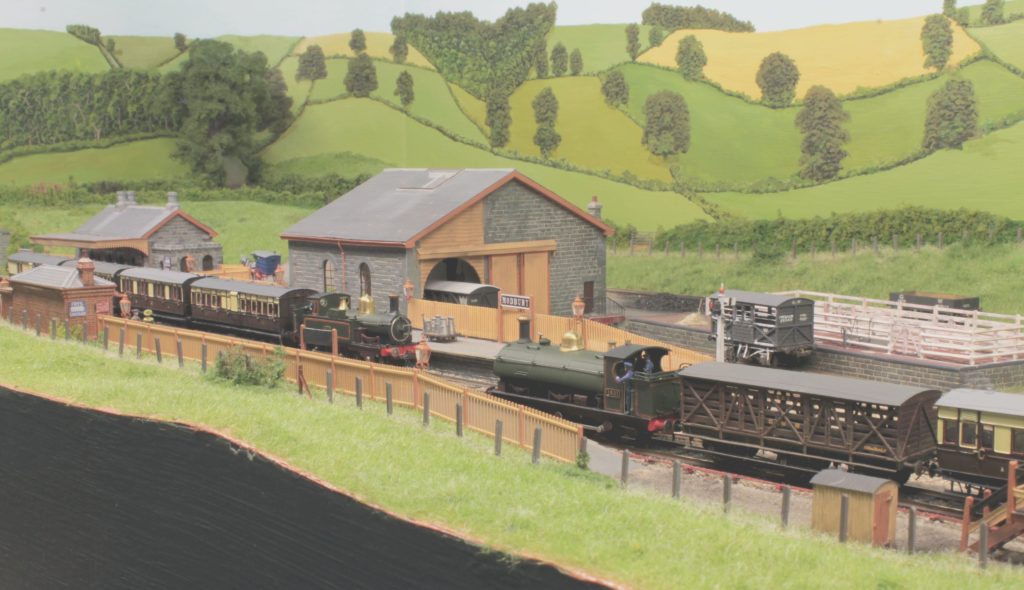
Modbury (2mm Finescale) - Ian Smith
Modbury is a 2mm Finescale layout representing a Great Western “might have been” through station as it could have appeared in the Edwardian period, c.1906.
The track is built to represent Brunel’s Baulk Road. The locos are all scratchbuilt, and the rest of the stock is either scratch or kit built (some from kits of my own design).
The sections of the layout are controlled by the signals, meaning that trains can only move if the relevant route and signals have been set. Each signal uses 2 relays – one to provide power to the section in rear and one for the section in advance of the relevant signal. The relay wiring allows the signal to be restored to danger but still provide power to the section in advance of the signal.
Buildings are all scratchbuilt from plasticard, and are principally based on South Devon prototypes on the Moretonhampstead branch. The exception being the Signal Box, which comes from Bodmin General.
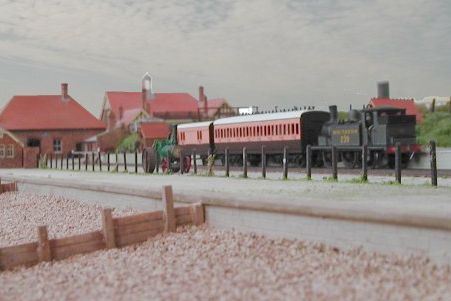
Lee-on-the -Solent (4mm Scale P4) - South Hants MRC
The Lee-on-the-Solent Light Railway was a bold town planning attempt of the late 1800s. The promoters hoped that here was a watering place with everything going for it: a splendid beach, a pleasant climate, superb views across to the Isle of Wight, the sheltered areas of the Solent for boating, and in addition, it was much nearer London then Bournemouth which was obviously the place to model it on.
The railway was opened on 12th May 1894 by the Lee-on-the-Solent Railway Company as the seaside terminus of the branch that left the LSWR Fareham to Gosport line at Fort Brockhurst. In 1909 the LSWR leased the line and was subsequently taken over by the SR in 1923.
Sadly, the line became a burden to the SR and consequently the last train ran on 29th October 1935 with the track being lifted c1939.
The layout was originally built by a professional model maker, Colin Hayward, as a result of taking a school party on a historical visit. It was one of the very first examples of a layout built to P4 standards and it made its debut at the South Hampshire Railway Modellers exhibition in October 1981. Colin kindly donated the layout to the East Hampshire Area Group of the Scalefour Society in 1993 and since then, a number of modifications have been made by various members.
The layout today is presented around the time of grouping (1923) allowing both LSWR and SR stock to be run. Motive power includes an ex-LBSCR D1 class tank and Terriers. All are fully compensated. Rolling stock includes Gate stock sets and various coal wagons from local merchants.
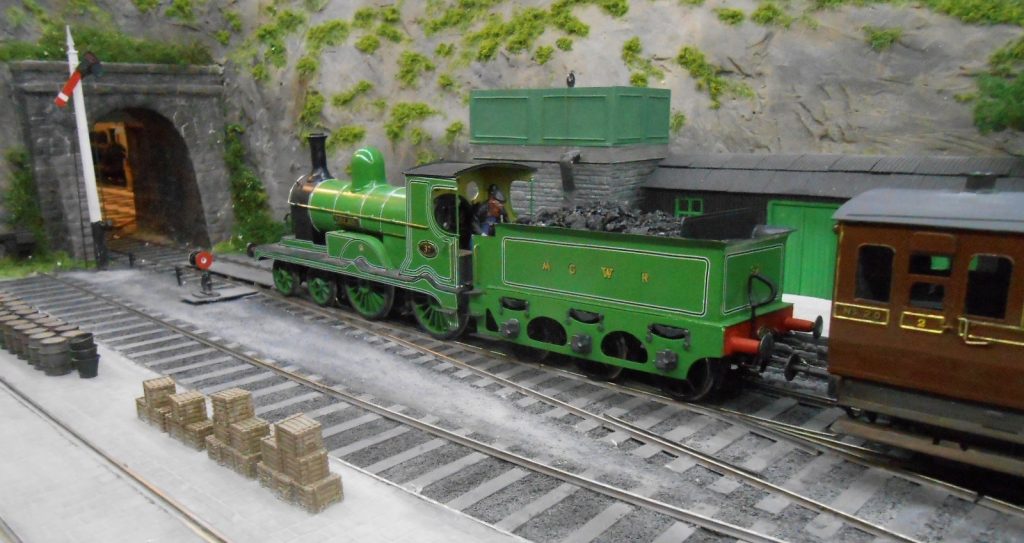
Northport Quay (7mm scale, 36.75mm gauge) - David Holman
This is a ‘cameo’ layout, representing a small harbour in County Mayo on the north west coast of Ireland. Inspired by the Westport Quay branch, there is enough room for a small tender engine and two six wheel coaches or four wagons.
The track gauge in Ireland is 5’3 [or 1.6m], so in 7mm scale that means scratchbuilt, 36.75mm gauge, with Code 100 flat bottomed rail. Stock is likewise all kit or scratchbuilt, for there is nothing ready to run, but then that is what I enjoy. Over the last few years, enough locos, wagons and coaches have been built to enable two distinct periods to be displayed.
First we have the early 1900s, which means four separate companies and liveries – Great Southern & Western, Limerick, Waterford & Western, Midland Great Western and the Sligo, Leitrim & Northern Counties Railway. For the 1950s, the CIE has taken over everything, apart from the SLNCR, which is still independent. Two other key items are the coaster, which was built around the Langley ‘Clyde Puffer’ kit and the mobile crane.
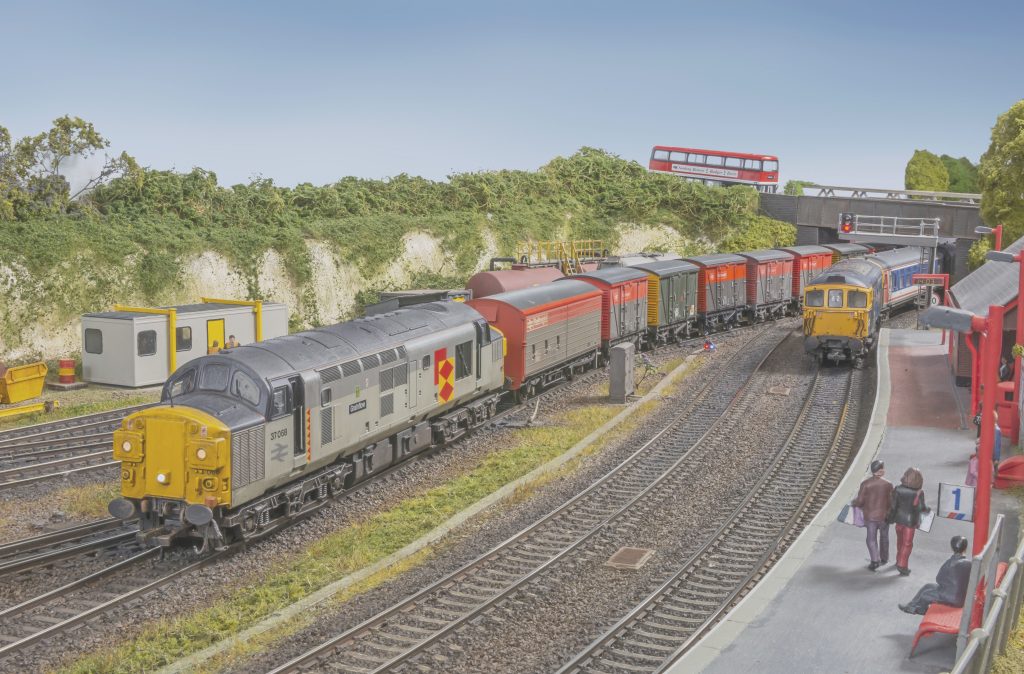
Tidworth (4mm scale 00) - Ian Blackall
What if the ex-Midland & South Western Junction Railway route had survived between Romsey and Swindon via Andover Junction due to its importance as a secondary route from the North to the docks at Southampton, thus relieving pressure from the congested Reading to Basingstoke route and providing an alternative diversionary option?
Tidworth has increased in size in the 1970s and 80s , so much so that the previously military only railway line was upgraded, and the station rebuilt just as NSE came into being. NSE services that previously terminated at Bedwyn from Reading now continue to Tidworth, plus the original Portsmouth to Andover Jct service is extended to terminate at Tidworth. The line sees much MoD traffic that reverses in the station to access both the exchange sidings for Bulford, and the sidings at Ludgershall. Much of this traffic comes from Didcot yard via the Swindon routing but also from Marchwood and Eastleigh. The SWITCH warehouse at Andover has relocated to Tidworth and receives a variety of traffic mainly in vans for onward road transport. Lastly ECC opened a new quarry, and slurry is loaded into silver bullets which are combined with those from Quidhampton at Andover yard for onward movement.
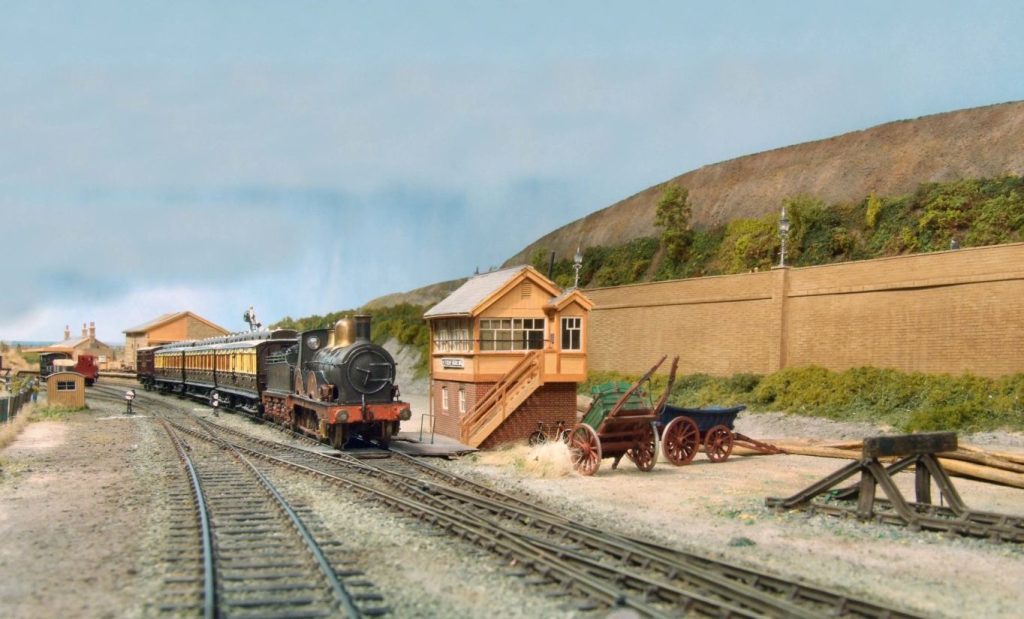
Westcliff (4mm scale EM Gauge) - Richard Butler
Westcliff is a ‘might have been’ whose location is based on the Dorset seaside town of West Bay, Bridport’s harbour, as it might have evolved by the 1920s.
Tthe railway arrived at West Bay in 1848 with the expectation that the town would grow into a seaside resort in the same way as Bournemouth or Weymouth. Land was bought in preparation for promenades, walks, gardens and hotels. Fortunes were to be made. In the event none of this happened, the main result of the railway’s arrival was the decline of trade through the harbour.
However, in our version of events not only did the town become a successful resort but the harbour continued to flourish with the export of coal (from Somerset and South Wales), shingle (from nearby Chesil Beach), rope and netting (manufactured locally) and the importation of timber from Scandinavia. Some light shipbuilding was also carried out.
The existing station was moved to make way for developments in the town and a larger station built in a new location under the ‘west cliff’ to cater for a now intensive service of main line holiday expresses and local passenger trains. Goods trains bring supplies into the town and service the harbour via a short branch line.
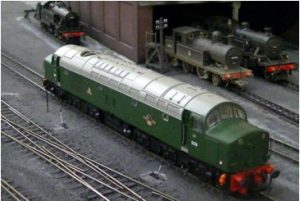
Yewston Road (4mm scale OO Gauge) - David and Alison Barker
Yewston Road is a former LNWR motive power depot somewhere in the north-west of England. Based on the cramped track layout of the depot at Lancaster Green Ayre, it is set around 1960. There is a four-road engine shed in the later LMS style with a reinforced concrete roof and smoke vents, accessed via the 70-foot turntable. The coal stage is a typical LNWR “coal hole” and there is a fuel point for the new-fangled diesels in one corner.
It is a busy depot, with locomotives coming and going all day. Most of the later LMS types can be seen whilst a few pre-grouping designs still soldier on. Some early diesels can be seen, mainly coming in for refuelling. Operation is by DCC using Digitrax equipment as this is the Southampton MRS standard. Some of the diesels are fitted with sound modules.
Originally built as a home layout by John Hilton of Romsey and never exhibited, it was purchased in 2014. Some buildings and detail, including the shed offices, have been added behind the engine shed and the terraced houses have replaced the original back scene. A road bridge separates the shed yard from the new fiddle yard that has been added to the original layout.
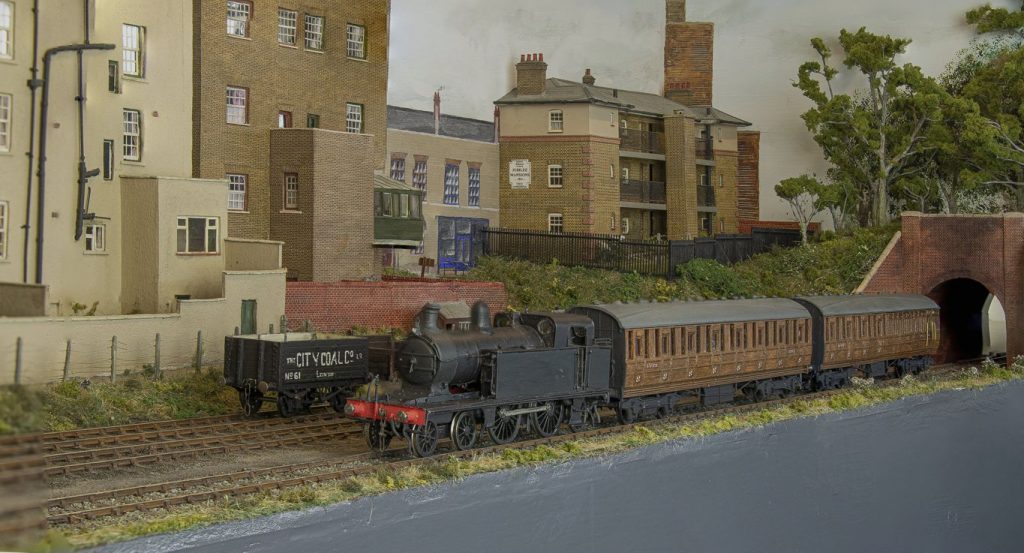
Yard No. 2 (4mm scale P4) - David Barrett
The layout is based in the general London area with a LNWR warehouse and small coal yard located off of a minor route operated by another company. This was a common practice not only in London but elsewhere presumably by agreement. As a result, the operation could be by a number of different companies. I have assumed that the other company concerned would deliver freight to the sidings from adjacent transfer sidings using their engines. To achieve flexibility, I have tried to not place too many features that would fix the location and at present it could be Great Western or Midland featured.
I have also tried to make the timescale as flexible as I can which will allow stock from different eras to be included. This could then feature GWR or LNER stock, possibly as far as early BR.
The warehouse was based upon one in Heaton Moor in Stockport but reduced to a more manageable size. The domestic buildings are based upon examples in London and Weston-super-Mare.
Widley and St George (4mm scale 00) - SHMRC
One for our younger visitors. Come and drive trains pulled by Thomas, Percy and friends. A small fee is payable and proceeding will go to charity
